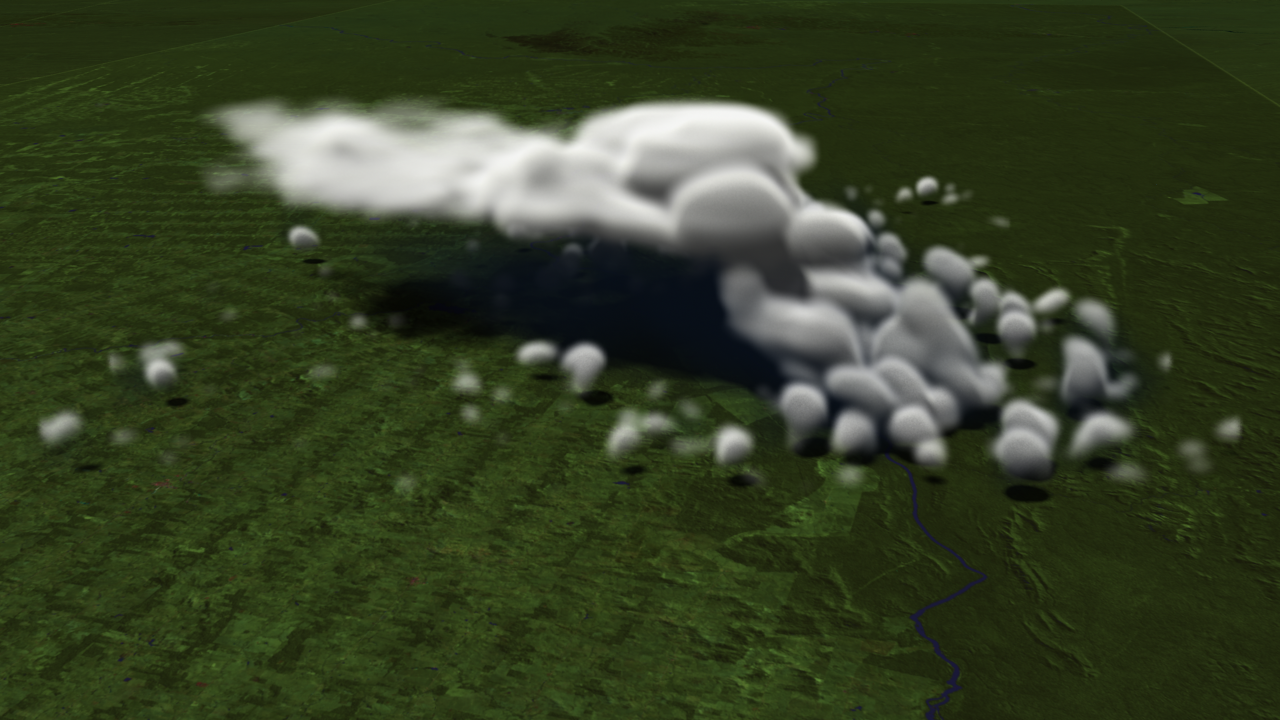Up, Up And Away
In the late 18th century, Count Rumford discovered the phenomenon of heat transfer in fluids—a process called convection—as he examined why some English desserts, such as apple pie, stay warm for so long. Convection as it pertains to atmospheric phenomena, however, is no pie-in-the-sky concept. Many clouds, including the puffy cumulus or more threatening cumulonimbus, get their start thanks to the rise of sun-warmed air and water vapor. Fortunately, scientists today have more tools at their disposal than in Rumford's day with which to study the characteristics of cloud evolution. The visualization below uses data from the NASA Goddard Cumulus Ensemble Model to simulate a thunderstorm that formed on February 23, 1999 in Rondonia, Brazil. Watch as clouds grow, rise, merge and give way to rain. The entire evolution typically lasts a few hours, but is accelerated in the video to be viewed in just under a minute.

Cloud evolution in under a minute.
Morning sunlight drives the rise of warm air and moisture, which condenses and forms billions of tiny droplets that make up a cloud.

Low-altitude winds combine clouds as a growing mass rises into the upper troposphere.

Rain (blue) cools the air below the storm system, generating downdrafts that cause some clouds to merge and others to dissolve.

A single storm cloud cast in the shape of an anvil emerges as high-altitude winds level the cloud top.

An astronaut aboard Space Shuttle Challenger photographed this cluster of cumulonimbus clouds near the Parana River in southern Brazil.
Credits
Please give credit for this item to:
NASA's Goddard Space Flight Center
Astronaut image STS41B-41-2347 was provided by the Earth Sciences and Image Analysis Laboratory at Johnson Space Center.
-
Animator
- James W. Williams (Global Science and Technology, Inc.)
-
Narrator
- Kathryn Hansen (Wyle Information Systems)
-
Producer
- Kayvon Sharghi (USRA)
-
Scientists
- Wei-Kuo Tao (NASA/GSFC)
- Stephen Lang (NASA/GSFC)
-
Writer
- Kathryn Hansen (Wyle Information Systems)
Release date
This page was originally published on Tuesday, May 22, 2012.
This page was last updated on Wednesday, May 3, 2023 at 1:53 PM EDT.
